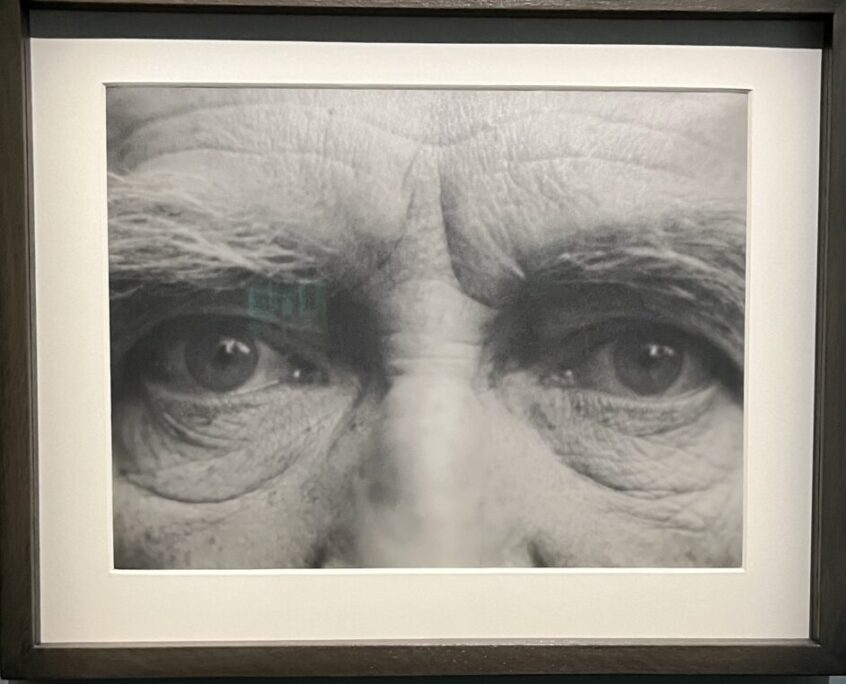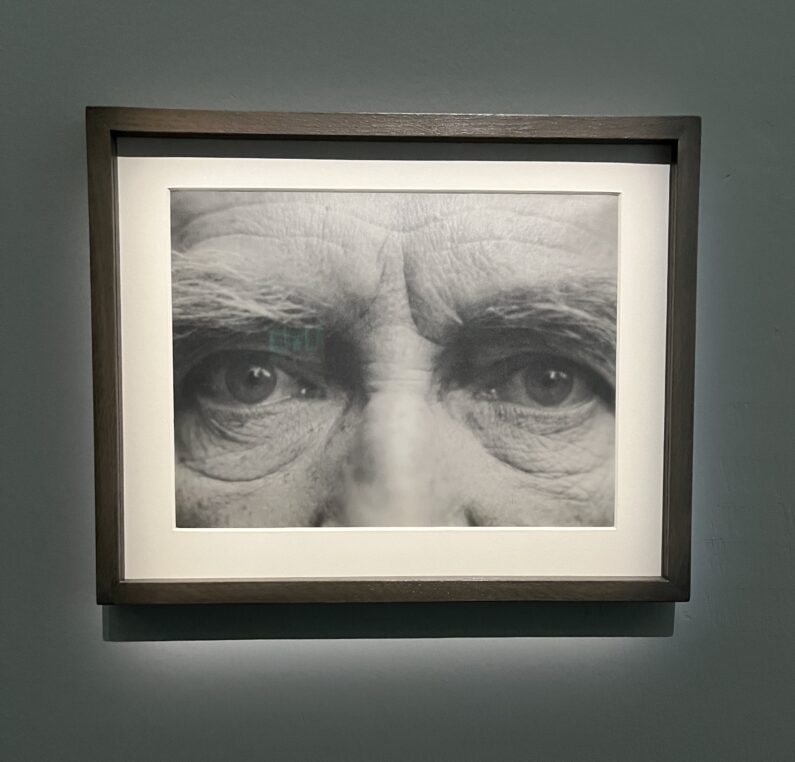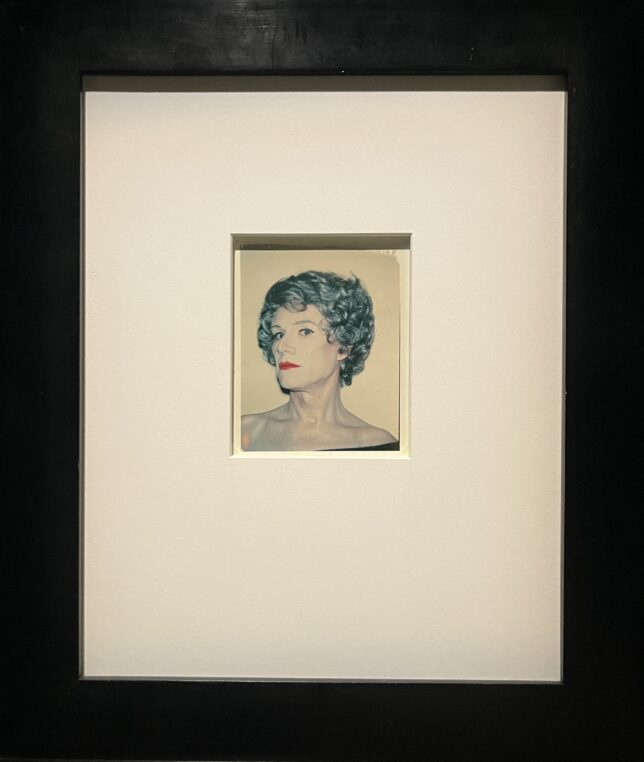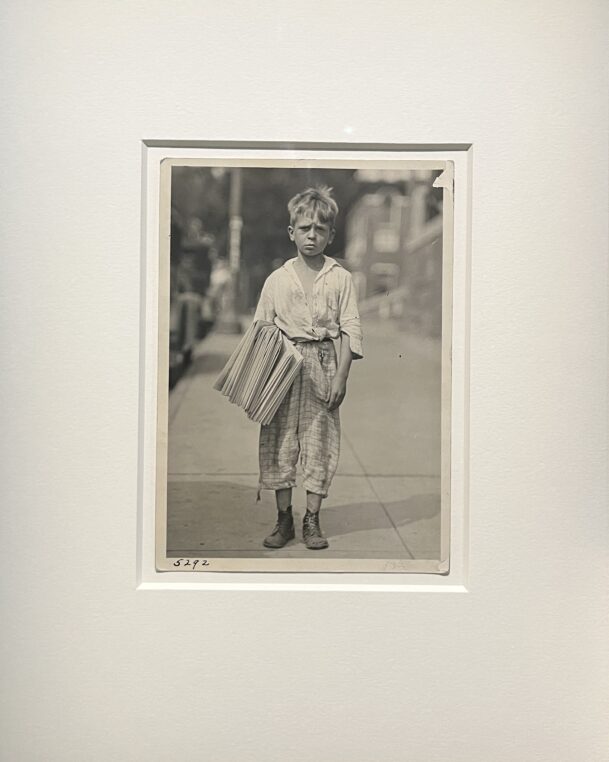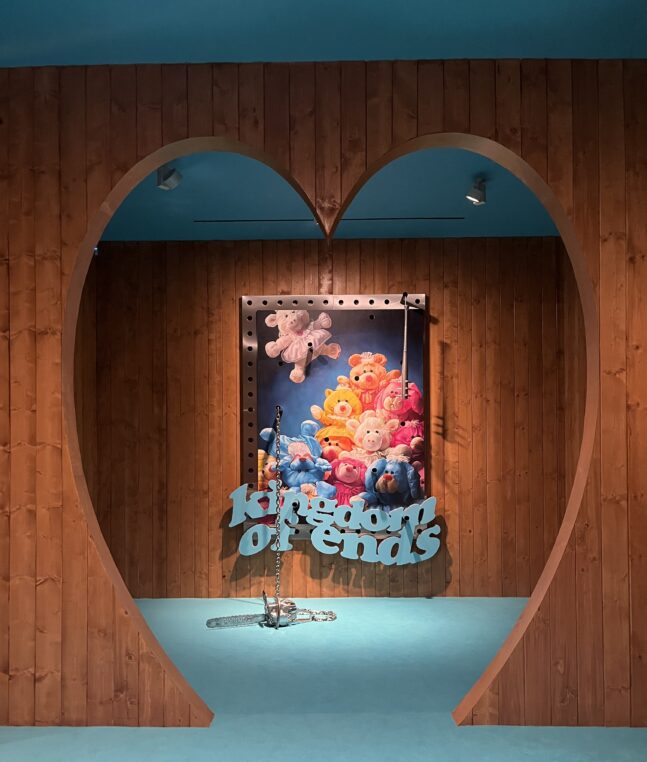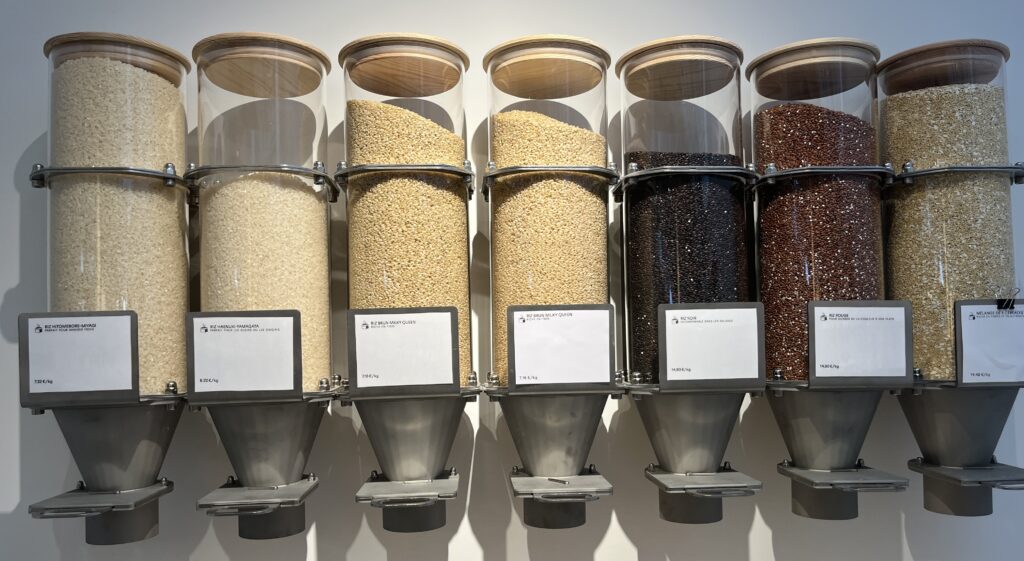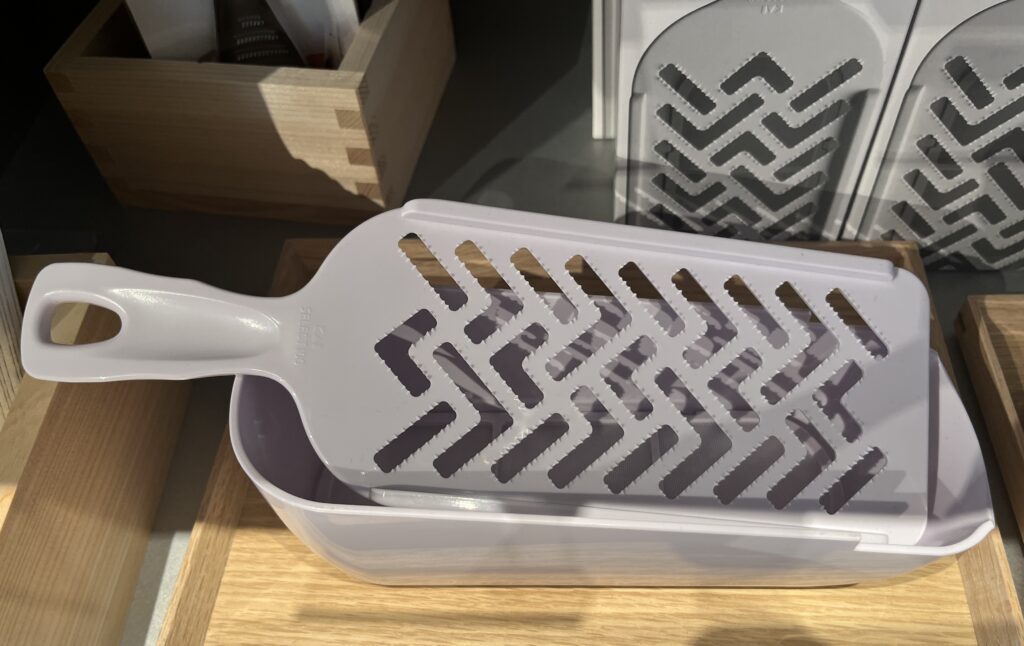The Marin Karmitz/Pompidou center exhibition “Corps à Corps” of 500 photographs is a real marathon of faces, bodies and human dramas, all in black and white. A little too many to my taste, and very intellectually conceived, but you can choose to look at what you like. I heard that the first opening of the rentrée was very crowded, it was the place to be for real Parisians. Conceived as a conversation between the cinematographer – producer – mk2 movie theatre founder and Julie Jones, curator at Centre Pompidou, it brings together two fabulous (40 000 prints for Pompidou) collections of XX th and XXI th century photographers. For me, the highlight was the wall of Paul Strand pictures, the room dedicated to Annette Messager with her pink and blue dresses and the series of political shots for the National Child Labor committee in 1908, by Lewis Hine, of children under 16, working in the US.

Annette Messager, History of the pink dress, 1990, History of the blue dress, 1990, Collection Marin Karmitz
“My trophies, my hands”, 1987 is a striking diptych of painted photos in a corpus of works where Annette Messager uses other people’s pictures and distorts them before using the camera herself to fragment and deform faces and bodies. Another series of Man Ray’s “L’inconnue de la Seine” (the unknown woman from the Seine) includes elements from both collections. It refers to the face of a woman who was found in the Seine at the ne dot the 19 th century and fascinated many artists.

W. Eugene Smith, Doctor Examining A Child’s Hand, the Hospital for Special Surgery, New York, 1968-1969, Marin Karmitz collection © 1965, 2017 The Heirs of W. Eugene Smith / Magnum Photos, Marin Karmitz collection, Photo : Florian Kleinefenn
I liked very much Stanislaw Ignacy Witkiewicz‘ series of faces from 1931. Defining himself as a portraitist and psychologist, he asked his friend Jószef Glokowski to take many portraits of him where he adopted exaggerated and grotesque expressions. These pictures echo the subversive Photobooth radical shots by the Surrealists.
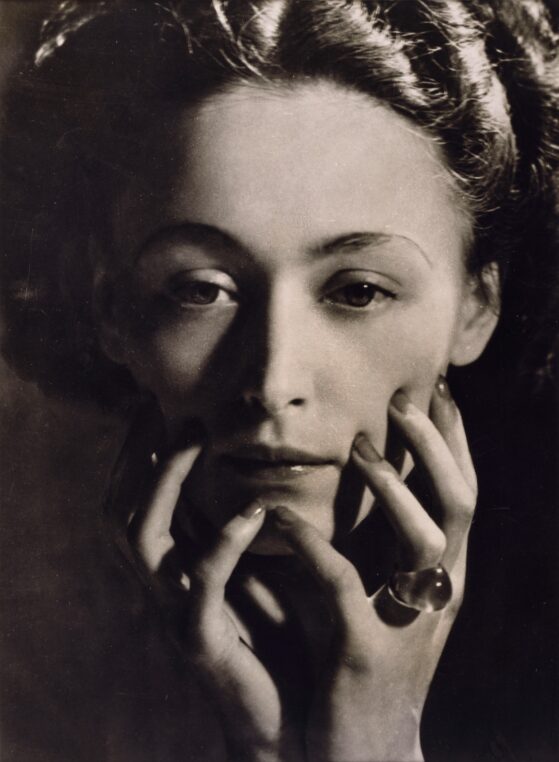
Dora Maar, “Nusch Eluard”, Around 1935, Centre Pompidou – Musée national d’art moderne, Paris Purchase, 1987 © Adagp, Paris 2023 Photographic reproduction : Centre Pompidou – Mnam-Cci/ Jean-Claude Planchet/
There was a nice little surprise at the end of the show, in two “Self portraits in Drag” by Andy Warhol. These polaroids from 1981 are extremely interesting to understand the artist’s personality. And this is exactly the theme developed throughout the show. How does photography participate in the origin of identity? From the Ellis Island shots by Lewis Hine to the extraordinary eyes by Pierre Dubreuil (the first picture in the show), from Assam Shoshan‘s series “Simplon” of undocumented immigrants to Agnès Bonnot‘s Paris metro scenes, there is a wide choice of unknown exceptional shots in this exhibition, which took two years in the making.
“I have always between fascinated by the dialogue between artists” declares Marin Karmitz in the catalog and one thing is certain: his personality comes out strongly through the choice of photographs in the collection. Born in 1938 in Bucarest in a Jewish family, he moved to France when he was 9. He worked with Marguerite Duras on his first short film “Nuit Noire Calcutta” in 1964, then with Samuel Beckett on “Comédie”. He married the child psychiatrist Caroline Eliacheff in 1975 and they have two sons. He is now mainly famous for having created an empire of movie theaters mk2 which promotes cinema within cities, a part which he believes is major. In Paris they are located at Biblitohèque Nationale or on Quai de Loire, at Beaubourg and many other sites where the young gather. Centre Pompidou until March 25, 2024.
I felt a bit depressed when coming out of the black and white show, having seen too many pictures, and rushed to Galerie Templon, a block away on rue du Grenier Saint Lazare, where I encountered by chance the Dutch artist Robin Kid in his “Kingdom of Ends”. The turquoise wall to wall carpeting (the visitor is invited to cover its shoes), the large Rauschenberg inspired visuals of children sipping milkshakes, eating cereals or salami sandwiches, and the displays of toys or sports accessories are vital and uplifting. As he told me in a charming simple way, he was raised by his grandparents in a mining town in southern Netherlands.
In his large works, he tries to portray the magic of childhood where a generation of kids were spoiled with excesses of toys and food. Yet their future is doomed with the threats of our present world. His sculptures/paintings take us into a dream universe, where we can forget everything and the reality comes back through chain saws, guns, tires or gasoline cans sculpted like jewels. Robin Kid works from his studio near Rambouillet, where Daniel Templon met him through a journalist from Arte. This is his second exhibition in the gallery and he is so smart and charming that there will probably be many more. Until October 21 at Templon.
I came out of the gallery flying with happiness and walked to the new Japanese shop-restaurant Irasshai, recently opened by Jean Luc Colonna in front of the Pinault collection, 40 rue du Louvre. The premises are beautiful and you can find all kinds of Japanese ingredients and tools like ginger grater or microwave rice cookers for the seven kinds of rice that are for sale. There are three eating spaces: one for sandwiches, one for street Japanese food with rice curries, no sushis though, chicken Yuzu or salmon Teriyaki and noodles which I found mediocre (lukewarm vegetable with burning curry) but cheap.
The fancier restaurant downstairs is not open yet but there are tables outside where many young handsome professionals seemed happy. There is a good selection of whisky and sake of course and Japanese aubergines which should be saved, they are so beautiful!
The area is definitely booming with the Galerie Italienne across the street (Gommaar Gilliams opens on the 15 th).
Share this Post
